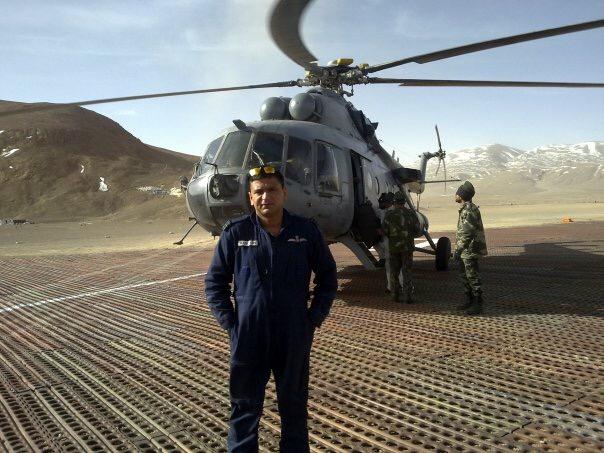Safety in military/commercial aviation continues to depend on good crew performance. Good crew performance, in turn, is founded on standard operating procedures that are clear, comprehensive, and readily available to the flight crew. Development of SOPs is most effective when done by collaboration, using the best resources available including the end-users themselves, the flight crews. Once developed, effective SOPs should be continually reviewed and renewed. Despite all the efforts, deviation from SOPs occurs because of a variety of reasons; intentional deviations and inadvertent deviations from SOPs have been identified as causal factors in many aircraft accidents and incidents.
Violation of an SOP incident was narrated by my course mate and friend Gautam when we were discussing Indo-China standoff in Galwan Vally while also highlighting the difficulty of operating at such altitudes. Before I proceed I would like to bring out that mountain and high altitude operations are always considered risky and challenging. Any operation at 10,000 ft or above is considered as high altitude operation. However, you just add another 10,000 feet to that while operating in the Himalayas where Indian armed forces conduct regular operations and this is the reason they are considered to be scary with few more defiant threats like-
- Higher you go more careful you have to be because you are operating closer to your own and aircraft’s limit.
- You have limited options in the Himalayas because you are landing in a bowl or valley because you still have mountains around. So you are not only low on power but also committed to the approach-landing at a very early stage because of terrain.
- Lack of infrastructure (availability of fuel, overnight parking, communication, or lighting system) and poor weather reporting places a heavy burden on military pilots who have to consider these factors before taking a mission.
Indian armed forces undertake regular operations for maintenance and casualty evacuation at these treacherous heights. The incident happened in 2009, the mission involved a para drop of supplies (ration) followed by landing to pick up a patient. Both the pilot and copilot of Mi17 IV were qualified for Siachen and Sub Sector North with more than 7000 hrs amongst them.

“We took off from Thoise in a loaded Mi-17 IV for a drop sortie followed by landing at Tsogstaslu”, he said. “Did not reach the SOP altitude at the turning point Shyok towards Gogra (no attempt either) because we expected that valley to be like the Shyok valley……. at least flat if not that wide”. “We were busy catching up with each other”, he explained when I arched my eyebrows in a question.
“After the turn, in the first few minutes it was evident that this is going to be a nasty day” (no discussion…. only telepathy still). Minutes later we were in a down draught and with take-off power applied were still descending headed for the valley floor.” He explained further that the valley was very narrow with hills all around. “No escape route, there was none….hilly terrain within the valley, and no possibility of turn either since we had not climbed in the Shyok valley”. Imagine a valley floor of 15,000 feet and you are slowly descending towards it with take-off power applied. You can not turn also because power is not adequate, because if you attempt a turn the rate of descent will further increase.
We quickly explored all the possibilities and instructed gunner to prepare for offloading 2 Tons of load. “Hurry up and be ready to push on our command” was the order which luckily did not have to be executed. The pilots were not aware of the presence of mountain waves in that area. In addition, not adhering to the SOP got them into a tight situation because of turbulence/mountain waves/downdraft. The pilot on controls maneuvered the helicopter within the valley to try and get out of the situation.”The VSI started showing a climb just as we were about to offload the load” ….. this power allowed us to carry out a turn back towards Shyok where we climbed up as per SOP and continued with the mission. “Just imagine how embarrassing it would have been otherwise” and we were both lost in our own thoughts. Lady Luck was on their side and they got out of valley unscathed but not without learning a vital lesson. Later they learned that this phenomenon was typical at that spot which is a confluence of many valleys. This was the reason perhaps SOP was made to climb to a certain altitude before entering the valley.
SOPs are designed and made to achieve consistently safe flight operations through adherence to SOPs that are clear, comprehensive, and readily available to flight crewmembers. SOPs are the result of a careful process, often conducted over a period of many years, which considers all likely outcomes; deviation from a standard procedure may lead to an unexpected and unsafe outcome. Key features of the effective SOP are:
- The procedure is appropriate to the situation.
- The procedure is practical to use.
- Crewmembers understand the reason for the procedure.
- Pilot Flying, Pilot not flying, and Flight engineer duties are clearly delineated.
- Effective training is conducted.
- The attitude shown by instructors, check airmen, and managers all reinforce the need for the procedure.
Understanding an SOP
If all elements (above) are not consistently implemented, flight crews too easily become participants in an undesirable double standard condoned by instructors, check airmen, and managers. Flight crews may end up doing things one way to satisfy training requirements and check rides, but doing them another way in “real life” during line operations. When a double standard does appear in this way, it should be considered a red flag that a published SOP may not be practical or effective for some reason. That SOP should be reviewed and perhaps changed.
When flight crew members understand the underlying reasons for an SOP they are better prepared and more eager to offer effective feedback for improvements. The operator, in turn, benefits from more competent feedback in revising existing SOPs and in developing new SOPs. Those benefits include safety, efficiency, and employee morale. When flight crew members understand the underlying reasons for an SOP, they are generally better prepared to handle a related in-flight problem that may not be explicitly or completely addressed in their operating manuals.
Be safe.



